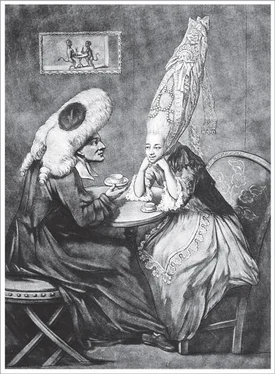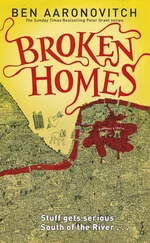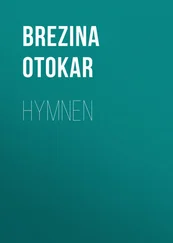Bill Bryson - At Home
Здесь есть возможность читать онлайн «Bill Bryson - At Home» весь текст электронной книги совершенно бесплатно (целиком полную версию без сокращений). В некоторых случаях можно слушать аудио, скачать через торрент в формате fb2 и присутствует краткое содержание. Жанр: Старинная литература, на английском языке. Описание произведения, (предисловие) а так же отзывы посетителей доступны на портале библиотеки ЛибКат.
- Название:At Home
- Автор:
- Жанр:
- Год:неизвестен
- ISBN:нет данных
- Рейтинг книги:4 / 5. Голосов: 1
-
Избранное:Добавить в избранное
- Отзывы:
-
Ваша оценка:
- 80
- 1
- 2
- 3
- 4
- 5
At Home: краткое содержание, описание и аннотация
Предлагаем к чтению аннотацию, описание, краткое содержание или предисловие (зависит от того, что написал сам автор книги «At Home»). Если вы не нашли необходимую информацию о книге — напишите в комментариях, мы постараемся отыскать её.
At Home — читать онлайн бесплатно полную книгу (весь текст) целиком
Ниже представлен текст книги, разбитый по страницам. Система сохранения места последней прочитанной страницы, позволяет с удобством читать онлайн бесплатно книгу «At Home», без необходимости каждый раз заново искать на чём Вы остановились. Поставьте закладку, и сможете в любой момент перейти на страницу, на которой закончили чтение.
Интервал:
Закладка:
Just how surprising was brought home by a discovery in Turkey in 1958. One day toward the end of that year, a young British archaeologist named James Mellaart was driving through an empty corner of central Anatolia with two colleagues when he noticed an unnatural-looking earthen mound—a “thistle-covered hump”—stretching across the arid plain. It was fifty or sixty feet high and two thousand feet long. Altogether it covered about thirty-three acres—a mysteriously immense area. Returning the next year, Mellaart did some experimental digging and, to his astonishment, discovered that the mound contained the remains of an ancient city.
This wasn’t supposed to happen. Ancient cities, as even laymen knew, were phenomena of Mesopotamia and the Levant. They were not supposed to exist in Anatolia. Yet here was one of the very oldest—possibly the very oldest—bang in the middle of Turkey and of a size that was astoundingly unprecedented. Çatalhöyük (the name means “forked mound”) was nine thousand years old. It had been lived in continuously for well over a thousand years and at its peak had a population of eight thousand.
Mellaart called Çatalhöyük the world’s first city, a conclusion given additional weight and publicity by Jane Jacobs in her influential work The Economy of Cities , but that is incorrect on two counts. First, it wasn’t a city but really just a very large village. (The distinction to archaeologists is that cities have not just size but also a discernible administrative structure.) Even more pertinently, other communities—Jericho in Palestine, Mallaha in Israel, Abu Hureyra in Syria—are now known to be considerably older. None, however, would prove stranger than Çatalhöyük.
Vere Gordon Childe, father of the Neolithic Revolution, didn’t quite live long enough to learn about Çatalhöyük. Shortly before its discovery, he made his first visit home to Australia in thirty-five years. He had been away for well over half his lifetime. While walking in the Blue Mountains, he either fell to his death or jumped. In either case, he was found at the bottom of an eminence called Govett’s Leap. A thousand feet above, a passerby found his jacket carefully folded, with his glasses, compass, and pipe neatly arranged on top.
Childe would almost certainly have been fascinated with Çatalhöyük because almost nothing about the place made sense. The town was built without streets or lanes. The houses huddled together in a more or less solid mass. Those in the middle of the mass could be reached only by clambering over the roofs of many other houses, all of differing heights—a staggeringly inconvenient arrangement. There were no squares or marketplaces, no municipal or administrative buildings—no signs of social organization at all. Each builder put up four new walls, even when building against existing walls. It was as if the inhabitants hadn’t got the hang of collective living yet. It may well be that they hadn’t. It is certainly a vivid reminder that the nature of communities and the buildings within them is not preordained. It may seem to us natural to have doors at ground level and houses separated from one another by streets and lanes, but the people of Çatalhöyük clearly saw it another way altogether.
No roads or tracks led to or from the community either. It was built on marshy ground, on a floodplain. For miles around was nothing but space, and yet the people packed themselves densely together as if pressed by incoming tides on all sides. Nothing at all indicates why people should have congregated there in the thousands when they might have spread out across the surrounding countryside.
The people farmed—but on farms that were at least seven miles away. The land around the village provided poor grazing, and offered nothing at all in the way of fruits, nuts, or other natural sources of nutrition. There was no wood for fuel either. In short, there wasn’t any very obvious reason for people to settle there at all, and yet clearly they did in large numbers.
Çatalhöyük was not a primitive place by any means. It was strikingly advanced and sophisticated for its time—full of weavers, basketmakers, carpenters, joiners, beadmakers, bowmakers, and many others with specialized skills. The inhabitants practiced art of a high order and produced not only fabrics but also a variety of stylish weaves. They could even produce stripes—not evidently an easy thing to do. Looking good was important to them. It is remarkable to think that people thought of striped fabrics before they thought of doors and windows.
All this is just another reminder of how little we know, or can even begin to guess, about the lifestyles and habits of people from the ancient past. And with that thought in mind let’s go into the house at last and begin to see how little we know about it, too.
* In Britain corn has meant any grain since the time of the Anglo-Saxons. It also came to signify any small round object, which explains the corns on your feet. Corned beef is so called because originally it was cured in kernels of salt. Because of the importance of maize in America, the word corn became attached to maize exclusively in the early eighteenth century.
• CHAPTER III •
THE HALL
I
No room has fallen further in history than the hall. Now a place to wipe feet and hang hats, once it was the most important room in the house. Indeed, for a long time it was the house. How it came to this curious pass is a story that goes back to the very beginnings of England and a time, sixteen hundred years ago, when boatloads of people from mainland Europe came ashore and began, in an entirely mysterious way, to take over. We know remarkably little about who these people were, and the little we do know often makes no sense, but it was with them that the history of England and the modern house begins.
As conventionally related, events were straightforward: in AD 410, their empire collapsing, the Romans withdrew from Britain in haste and confusion, and Germanic tribes—the Angles, Saxons, and Jutes of a thousand schoolbooks—swarmed in to take their place. It seems, however, that much of that may not be so.
First, the invaders didn’t necessarily swarm. By one estimate, perhaps as few as ten thousand outsiders moved into Britain in the century after the Romans left—an average of only one hundred people a year. Most historians think that is much too small a figure, though none can put a more certain number in its place. Nor, come to that, can anyone say how many native Britons were there to receive or oppose the invaders. The number is variously put at between 1.5 million and 5 million—in itself a vivid demonstration of just how comprehensively vague a period we are dealing with here—but what seems nearly certain is that the invaders were very considerably outnumbered by those they conquered.
Why the vanquished Britons couldn’t find the means or spirit to resist more effectively is a deep mystery. They were, after all, giving up a great deal. For almost four centuries they had been part of the mightiest civilization on Earth and had enjoyed benefits—running water, central heating, good communications, orderly governments, hot baths—with which their rough conquerors were uncomfortable or unacquainted. It is difficult to conceive the sense of indignity that the natives must have felt at finding themselves overrun by illiterate, unwashed pagans from the wooded fringes of Europe. Under the new regime they would give up nearly all their material advantages and not return to many of them for a thousand years.
This was a period of Völkerwanderung , “the wandering of peoples,” when groups all across the ancient world—Huns, Vandals, Goths, Visigoths, Ostrogoths, Magyars, Franks, Angles, Saxons, Danes, Alamanni, and more—developed a strange, seemingly unquenchable restlessness, and Britain’s invaders were clearly part of that. The only written account we have of what happened is that left by the monk known as the Venerable Bede, who was writing three centuries after the fact. It is Bede who tells us that the invading force was made up of Angles, Saxons, and Jutes, but who they were exactly and how they related to one another is unknown.
Читать дальшеИнтервал:
Закладка:
Похожие книги на «At Home»
Представляем Вашему вниманию похожие книги на «At Home» списком для выбора. Мы отобрали схожую по названию и смыслу литературу в надежде предоставить читателям больше вариантов отыскать новые, интересные, ещё непрочитанные произведения.
Обсуждение, отзывы о книге «At Home» и просто собственные мнения читателей. Оставьте ваши комментарии, напишите, что Вы думаете о произведении, его смысле или главных героях. Укажите что конкретно понравилось, а что нет, и почему Вы так считаете.












